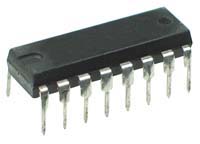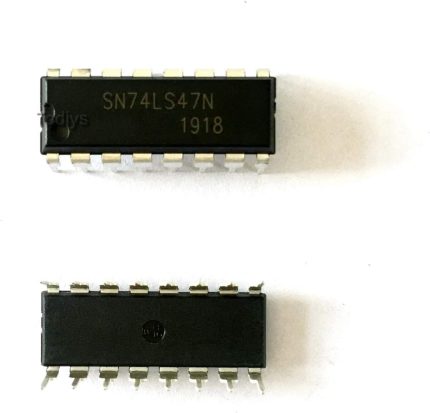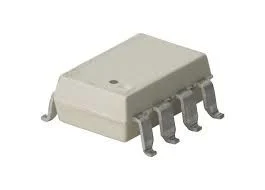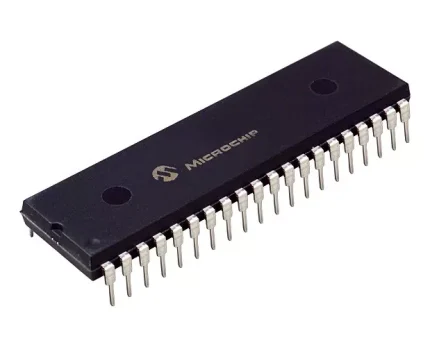The AM26LS32Ax and AM26LS33Ax devices are quadruple differential line receivers for balanced and unbalanced digital data transmission. The enable function is common to all four receivers and offers a choice of active-high or active-low input. The 3-state outputs permit connection directly to a bus-organized system. Fail-safe design ensures that, if the inputs are open, the outputs always are high. Compared to the AM26LS32 and the AM26LS33, the AM26LS32A and AM26LS33A incorporate an additional stage of amplification to improve sensitivity. The input impedance has been increased, resulting in less loading of the bus line. The additional stage has increased propagation delay; however, this does not affect interchangeability in most applications. The AM26LS32AC and AM26LS33AC are characterized for operation from 0°C to 70°C. The
Features 1
• AM26LS32A Devices Meet or Exceed the Requirements of ANSI TIA/EIA-422-B, TIA/EIA- 423-B, and ITU Recommendations V.10 and V.11
• AM26LS32A Devices Have ±7-V Common-Mode Range With ±200-mV Sensitivity
• AM26LS33A Devices Have ±15-V Common-Mode Range With ±500-mV Sensitivity
• Input Hysteresis 50 mV Typical
•Operate From a Single 5-V Supply
• Low-Power Schottky Circuitry
• 3-State Outputs
• Complementary Output-Enable Inputs
• Input Impedance 12 kΩ Minimum
• Open Input Fail-Safe
“PIC16f877A 16f877A 16f 877A Microchip 40 Pin Microcontroller” has been added to your cart. View cart
-20%

26LS31 QUADRUPLE DIFFERENTIAL LINE DRIVER SMD IC
₨ 300 Original price was: ₨ 300.₨ 230Current price is: ₨ 230.

27C512-120 DIP-28W EPROM 512kbit NEW
₨ 950 Original price was: ₨ 950.₨ 825Current price is: ₨ 825.
26ls32 DIP 26ls32 Quadruple Differential Line Receiver
₨ 250 Original price was: ₨ 250.₨ 200Current price is: ₨ 200.
Category: IC,S
Description
Reviews (0)
Be the first to review “26ls32 DIP 26ls32 Quadruple Differential Line Receiver” Cancel reply
Shipping & Delivery


MAECENAS IACULIS
Vestibulum curae torquent diam diam commodo parturient penatibus nunc dui adipiscing convallis bulum parturient suspendisse parturient a.Parturient in parturient scelerisque nibh lectus quam a natoque adipiscing a vestibulum hendrerit et pharetra fames nunc natoque dui.
ADIPISCING CONVALLIS BULUM
- Vestibulum penatibus nunc dui adipiscing convallis bulum parturient suspendisse.
- Abitur parturient praesent lectus quam a natoque adipiscing a vestibulum hendre.
- Diam parturient dictumst parturient scelerisque nibh lectus.
Scelerisque adipiscing bibendum sem vestibulum et in a a a purus lectus faucibus lobortis tincidunt purus lectus nisl class eros.Condimentum a et ullamcorper dictumst mus et tristique elementum nam inceptos hac parturient scelerisque vestibulum amet elit ut volutpat.
Related products
74LS08 – Quadruple Two Input AND Gate
74LS47 BCD to 7-segment Decoder 16 pin DIP Driver IC
A3120 IC HCPL3120 DIP
2.0 A Minimum Peak Output Current
15 kV/µs Minimum Common Mode Rejection (CMR) at VCM = 1500 V
0.5 V Maximum Low-Level Output Voltage (VOL) Eliminates the Need for a Negative Gate Drive
ICC = 5 mA Maximum Supply Current
Under Voltage Lock-Out Protection (UVLO) with Hysteresis
Wide Operating VCC Range: 15 to 30 Volts
500 ns Maximum Switching Speeds
Industrial Temperature Range : -40°C to 100°C
Atmega32 Atmega32a Atmega 32
Operating Voltage: 4.5V to 5V
Advanced RISC Architecture.
32 x 8 General Purpose Working Registers.
Fully Static Operation.
Up to 16 MIPS Throughput at 16 MHz.
On-chip 2-cycle Multiplier.
High Endurance Non-volatile Memory segments.
32 Kbytes of In-System Self-programmable Flash program memory.
1024 Bytes EEPROM.
2 Kbyte Internal SRAM.
Write/Erase Cycles: 10,000 Flash/100,000 EEPROM.
Data retention: 20 years at 85°C/100 years at 25°C(1).
Optional Boot Code Section with Independent Lock Bits.
In-System Programming by On-chip Boot Program.
True Read-While-Write Operation.
Programming Lock for Software Security.
Extensive On-chip Debug Support.
8 Single-ended Channels.
Byte-oriented Two-wire Serial Interface.
Programmable Serial USART.
Master/Slave SPI Serial Interface.
Programmable Watchdog Timer with Separate On-chip Oscillator.
HCPL-3120 – (A3120) SMD-8 LOGIC OUTPUT OPTOCOUPLER
NOR Gate IC 74LS02 Quad 2-input
Operating voltage range: +4.75 to +5.25V
Maximum supply voltage: 7V
Maximum current allowed to draw through each gate output: 8mA
TTL outputs
Low power consumption
Maximum ESD: 3.5KV
Typical Rise Time: 15ns
Typical Fall Time: 15ns
Operating temperature :0°C to 70°C
Storage Temperature: -65°C to 150°C
Operating temperature: 0°C to 75°C
Pin Number Description
NORGATE 1
2 1A-INPUT1 of GATE 1
3 1B-INPUT2 of GATE 1
1 1Y-OUTPUT of GATE1
NORGATE 2
5 2A-INPUT1 of GATE 2
6 2B-INPUT2 of GATE 2
4 2Y-OUTPUT of GATE2
NORGATE 3
8 3A-INPUT1 of GATE 3
9 3B-INPUT2 of GATE 3
10 3Y-OUTPUT of GATE3
NORGATE 4
11 4A-INPUT1 of GATE 4
12 4B-INPUT2 of GATE 4
13 4Y-OUTPUT of GATE4
SHARED TERMINALS
7 GND- Connected to ground
14 VCC-Connected to positive voltage to provide power to all four gates
SKU: 0401 Categories: Discrete Electronic Components, ICs, Logic Gates Tags: 2input, 74LS02, Gate, IC, NOR, quad
PIC 18F46K22
Sleep mode: 100 nA, typical
Watchdog Timer: 500 nA, typical
Timer1 Oscillator: 500 nA @ typical 32 kHz Flexible Oscillator Structure
Precision 16 MHz internal oscillator block:
Factory calibrated to 1%
Software selectable frequencies range of 31 kHz to 16 MHz
64 MHz performance available using PLL
No external components required
Four Crystal modes up to 64 MHz
Two external Clock modes up to 64 MHz
4X Phase Lock Loop (PLL)
Secondary oscillator using Timer1 @ 32 kHz
Fail-Safe Clock Monitor: Allows for safe shutdown if peripheral clock stops
Two-Speed Oscillator Start-up
PIC16f877A 16f877A 16f 877A Microchip 40 Pin Microcontroller
FAQs
What is a PIC16f877A microcontroller?
What kind of applications is the PIC16f877A suitable for?
Does this chip need any additional components to function?
How do I program the PIC16f877A?
What is the pin configuration of this IC?
PIC microcontroller development board
Buy PIC16F877A online Pakistan
PIC16F877A microcontroller tutorial
Best PIC16F877A projects
PIC16F877A datasheet
PIC16F877A programming
PIC16F877A microcontroller for beginners
Arduino vs











Reviews
There are no reviews yet.